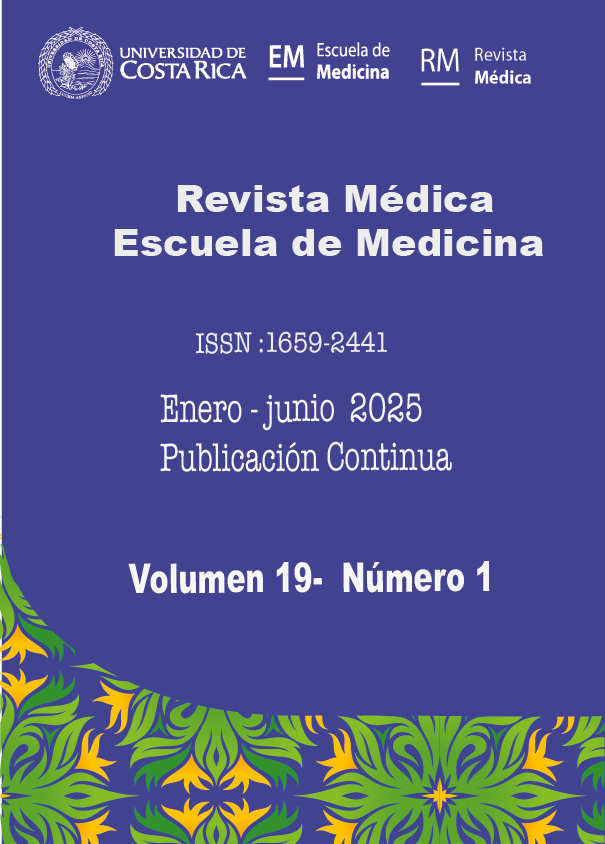Abstract
Cosmetics are health-related products that, due to their composition, use, or function, have the potential to impact people's health. The labels of these products must provide the necessary information for their proper and safe use, which is why labeling is regulated. Formaldehyde was used in some hair cosmetics for its straightening properties; however, its use is currently prohibited. This work aimed to verify compliance with the labeling regulations and demonstrate the absence of formaldehyde in keratin treatments available for sale in San José, Costa Rica. A colorimetric method was used for quantifying formaldehyde in the samples due to its sensitivity, speed, and cost-effectiveness. 18 products were analyzed, of which only 4 (22 %) met all the requirements of the current labeling regulations and 3 (17 %) products were found to have a concentration of formaldehyde between 3 and 4 %. These results show the need to maintain and reinforce controls in the national market for products of health interest.
References
. Ministerio de la Presidencia. Reglamento Técnico Centroamericano sobre Etiquetado de Productos Cosméticos. 2014. Disponible en: http://www.pgrweb.go.cr/scij/Busqueda/Normativa/Normas/nrm_texto_completo.aspx?param1=NRTC&nValor1=1&nValor2=47759&nValor3=50730&strTipM=TC . Consultado: 21 de octubre del 2024
Ministerio de Comercio Exterior de Costa Rica. Resolución 231-2008. 2008. Disponible en: https://www.comex.go.cr/media/3465/264_anexo-3-resolucion-231-2008.pdf. Consultado: 21 de octubre del 2024
U.S. Food and Drug Administration. El formaldehído en productos para suavizar el cabello: lo que debe saber. 2021. Disponible en: https://www.fda.gov/consumers/articulos-para-el-consumidor-en-espanol/el-formaldehido-en-productos-para-suavizar-el-cabello-lo-que-debe-saber. Consultado: 23 de octubre del 2024
National Cancer Institute. Formaldehído y cáncer. 2020. Disponible en: https://www.cancer.gov/espanol/cancer/causas-prevencion/riesgo/sustancias/formaldehido. Consultado: 23 de octubre del 2024
Centers for Disease Control and Prevention. Formaldehído. 2020. Disponible en: https://archive.cdc.gov/#/details?url=https://www.cdc.gov/niosh/topics/formaldehyde/default.html. Consultado: 23 de octubre del 2024
Occupational Safety and Health Administration. Formaldehído: hoja informativa. 2020. Disponible en: https://www.osha.gov/sites/default/files/publications/formaldehyde-factsheet.pdf. Consultado: 5 de noviembre del 2024
National Toxicology Program. Formaldehído: perfil en el Reporte sobre Carcinógenos. 2020. Disponible en: https://ntp.niehs.nih.gov/sites/default/files/ntp/roc/content/profiles/formaldehyde.pdf. Consultado: 5 de noviembre del 2024
European Union. Directiva 76/768/CEE del Consejo sobre productos cosméticos. 2005. Disponible en: https://eur-lex.europa.eu/LexUriServ/LexUriServ.do?uri=CONSLEG:1976L0768:20051125:ES:PDF. Consultado: 13 de noviembre del 2024
U.S. Congress. H.R.4296 - Cosmetics Safety Enhancement Act of 2019. 2019. Disponible en: https://www.congress.gov/bill/116th-congress/house-bill/4296/text. Consultado: 13 de noviembre del 2024.
Occupational Safety and Health Administration. Alerta sobre peligros: Formaldehído. 2020. Disponible en: https://www.osha.gov/sites/default/files/publications/hazard_alert_spanish.pdf. Consultado: 23 de octubre del 2024
Instituto Nacional de Seguridad y Salud en el Trabajo. NTP 170: Método analítico para la determinación de formaldehído. 2021. Disponible en: https://www.insst.es/documents/94886/326853/ntp_170.pdf/64e0bc54-7f53-4319-82bfcfe078ce3218?version=2.0&t=1638267620747. Consultado: 19 de noviembre del 2024
Agency for Toxic Substances and Disease Registry. Toxicological Profile for Formaldehyde. 2010. Disponible en: https://www.atsdr.cdc.gov/toxprofiles/tp111-c6.pdf. Consultado: 19 de noviembre del 2024
Gasparini F, Weinert P, Lima L, Pezza L and Pezza H. A simple and green analytical method for the determination of formaldehyde. J Braz Chem Soc. 2008;19(8):1531-1537. Disponible en: https://www.scielo.br/j/jbchs/a/3zTrqpWH4r7vDwjYkNBd9Hv/. Consultado: 22 de noviembre del 2024
Silva J, Costa C, Cerqueira C, Grazinoli R. Risco do uso do formol na estética capilar riesgo del uso del formol en la estética capilar. Med. leg. Costa Rica. 2017 Dec; 34(2): 32-42. Disponible en: http://www.scielo.sa.cr/scielo.php?script=sci_arttext&pid=S1409-00152017000200032&lng=en. Consultado: 22 de noviembre del 2024

This work is licensed under a Creative Commons Attribution-NonCommercial 4.0 International License.
Copyright (c) 2025 Jeimy Blanco Barrantes, Arlene

